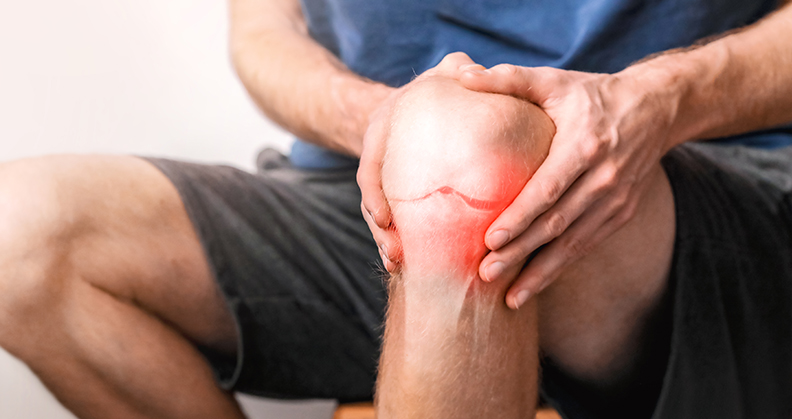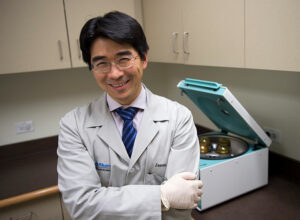
Weekend warriors and young, active patients are increasingly more interested in preserving their worn-out and injured joints instead of having them replaced. Their desire to maintain active lifestyles without undergoing major surgery has spurred new developments in joint preservation, which is gaining traction in orthopedics. Surgeons are also addressing joint pathologies more aggressively before they devolve into more serious conditions.
In response to these market dynamics, orthopedic companies and regenerative medicine firms are developing cell-based solutions and innovative implants that delay or avoid total joint replacements. These innovations have become especially important to address debilitating joint pain in patients who expect to return to active lifestyles much sooner than ever before.
Accessing Bone to Spark Regrowth
Earlier this year, Marrow Access Technologies (MAT) released SmartShot in the U.S. The marrow access device was designed specifically for ankle preservation by channeling into the joint’s bone to stimulate natural healing. According to MAT CEO and Co-Founder Joseph Saladino, penetrating the outer layers of bone allows blood and stem cells within bone marrow to activate cartilage, ligament and tendon healing.
“The device’s deep microneedling accesses marrow and stem cells with minimal impact on the underlying subchondral bone,” he explained. “This creates an optimal environment for recovery and harnesses the patient’s inherent healing capacity in a single-stage procedure.”
In a recently published study, researchers at the University of Pennsylvania showed that SmartShot effectively preserved the underlying subchondral bone compared to more traditional marrow access techniques. This is an important advancement when treating patients with unique cartilage damage.
Research shows that preserving the underlying subchondral bone is useful for larger chondral defects and can help prolong the health of joints. Allowing surgeons to effectively treat focal chondral defects, even in patients with hard bone, is a minimally invasive and more effective treatment option.
“We leveraged cartilage research from multiple independent laboratories to create a cost-effective and straightforward treatment for ankle cartilage injuries,” Saladino explained. “But that doesn’t mean the technology is limited to just this area.”
For example, Saladino pointed out that some surgeons who use the SmartShot treat very small cartilage defects, while others use it in combination with biologic solutions such as model scaffold materials.
Saladino said that many new joint preservation solutions are more cost-effective than traditional microfracture surgery. He believes cartilage regeneration technologies will continue to evolve, particularly in trauma and sports medicine, to enhance the patient experience through better outcomes.
“The orthopedic industry is beginning to realize that there is a wide spectrum of patients with traumatic cartilage injuries and that no single solution will effectively treat the entire spectrum,” Saladino said.
Moximed’s MISHA Knee System is an implantable shock absorber (ISA) that offloads pressure on the knee joint to stop the progression of osteoarthritis (OA), and is proving to be an effective joint-preserving solution. The device, which received FDA 510(k) clearance last April, is implanted under the skin and outside the joint’s structures during an outpatient arthroscopic procedure. It requires no bone cutting or altering of the joint’s anatomy and is totally reversible. The device is intended for patients with medial knee OA who may not be ready for a full knee replacement due to a host of factors, including age and joint health.
“The MISHA system is designed for highly symptomatic patients who are trapped in the cycle of imperfect conservative care while they wait to be indicated for a joint replacement,” said Moximed CEO Anton Clifford. “Most patients are too young for a joint replacement — between 30 and 50 years old — or they may have moderate cartilage disease that doesn’t warrant major surgery.”
The response from patients and surgeons has been positive, as have the findings of clinical studies. Data from three different studies showed that patients who received the MISHA implant experienced a five-year improvement in their pain symptoms and joint function. Many patients have also shown a reduced risk of conversion to arthroplasty.
“The device is very intuitive for patients to understand, and they’re reaching out to Moximed unsolicited on a daily basis to get more information about the device,” Clifford said. “Similarly, we’ve had a regular cadence of inbound surgeon requests who would like to gain access to the technology for their patients.”
Creating Cartilage from Scratch
The regenerative medicine firm EpiBone has produced an engineered allogenic osteochondral graft that recently received Investigational New Drug (IND) clearance from FDA for use in pre-clinical trials, which are expected to begin as soon as 2024.
EpiBone uses bone marrow stem cells to create lab-grown cartilage. Research presented in April at the Focus Meeting of the International Cartilage Regeneration & Joint Preservation Society indicated that the engineered tissue integrated better with adjacent native cartilage than grafts made from cadaver donor tissue.
“By growing cartilage in the lab from stem cells, we could eliminate supply chain constraints and potentially help more patients,” said Dr. Sarindr Bhumiratana, EpiBone’s Co-Founder and Chief Scientific Officer. “We have demonstrated the product’s safety and efficacy. Our next step is to test the product in a human trial.”
The engineered cartilage could benefit patients with damaged knee cartilage caused by sports injuries, trauma or post-traumatic arthritis. “Sports injuries are becoming more common, particularly in young people who need their knees to function properly for many years to come,” said Nina Tandon, Epibone’s Co-Founder and CEO. “Yet they often have access to limited treatment options that don’t fully alleviate their symptoms.”
EpiBone’s grafts offer an alternative to osteochondral allografts, which require harvesting cartilage from cadavers and are limited in supply. About 2,500 are available each year, according to EpiBone — not nearly enough to meet demand.
Ultimately, EpiBone would like to use a patient’s own cells to create new cells, which would eliminate issues like potential disease transmission from donors and even create an unlimited supply based on patient need.
Tandon said there is significant potential in creating an effective way to heal cartilage with a patient’s own stem cells. “Lab-grown cartilage offers a new venue to harness the power of living cells and to help heal cartilage, which is notoriously slow to recover from injury — if it recovers at all.”

Dr. Koh works with medical device and technology companies to help run successful clinical trials and commercialize new products. Photo Credit: NorthShore Orthopaedics/Jon Hillenbrand
Spreading the Word About Cartilage Regeneration
Jason Koh, M.D., Director of the Orthopaedic and Spine Institute at NorthShore University Health System in Chicago, is one of the nation’s top experts on cartilage regeneration. He regularly teaches about the newest developments at the University of Chicago Pritzker School of Medicine and Northwestern University’s McCormick School of Engineering.
Dr. Koh said that a much wider variety of joint issues can be addressed with more advanced solutions. “Cartilage lesions can be treated in the knee, hip, ankle, elbow and shoulder with regenerative methods,” he explained. “The best results are with focal defects. However, increasingly larger lesions can be treated with good reproducible results.”
He believes the orthopedic industry is gaining a much better understanding of the ways that new technology can be used to treat a range of joint issues, from common conditions to complex problems.
“Some of the most exciting advancements involve preserving the subchondral bone with new minimally invasive marrow stimulation techniques that use smaller, deeper needles to access stem cells and growth factors in bone marrow,” Dr. Koh said. “Other exciting advancements include the use of scaffolds to enhance cartilage regeneration. These have been shown to improve the quality of the repair.”
Applications of cartilage regeneration are proving successful. Notably, Dr. Koh said that newer bone marrow stimulation techniques have demonstrated improved outcomes and quality tissue repair in various trials and clinical experiences.
Dr. Koh cautioned that current microfracture techniques are variable in application and can even crush and damage subchondral bone, resulting in limited access to bone marrow. “It’s also very challenging or even impossible in certain joints to hit an awl perpendicular to the bone,” he said. “These factors make the outcomes of microfracture surgery less predictable.”
There are typically more candidates for newer cartilage regenerative solutions, although determining the most effective approach depends largely on the patient’s age, overall health, level of activity and bone health. Dr. Koh said ideal candidates are active individuals with focal chondral defects of the knee, ankle or hip, while patients with degenerative arthritis are better treated with more invasive techniques.
Cartilage regeneration compares favorably to more standard repair methods, Dr. Koh noted. “Traditional first-generation cartilage techniques are characterized by inconsistent outcomes,” Dr. Koh said. “Newer regeneration methods respect the subchondral bone and are based on basic science on how regeneration can be enhanced.”
These regeneration techniques also tend to last longer, even in the most active patients. “Long-term outcomes are quite favorable,” Dr. Koh said. “Clinical trials have shown the technique to be very durable.”
A major part of its success lies in tissue engineering and biotechnology. “These platforms allow for the development of new tools and enhanced treatments for cartilage regeneration,” Dr. Koh said. “Governmental regulation and added expense limit their use in many cases, but regeneration techniques that rely on unexpanded cells are valuable tools in treating cartilage defects.”
NHM
Natalie Hope McDonald is a contributing editor.




